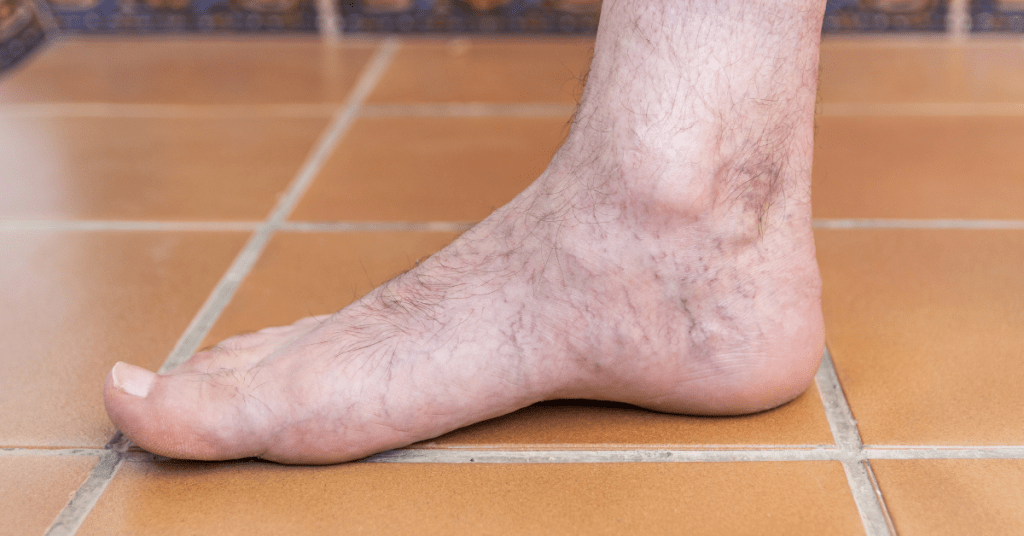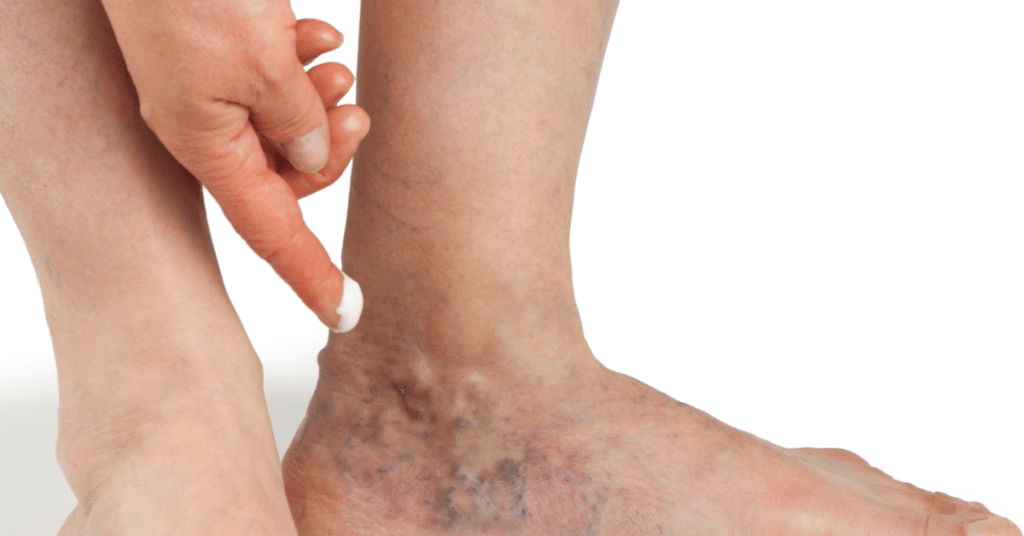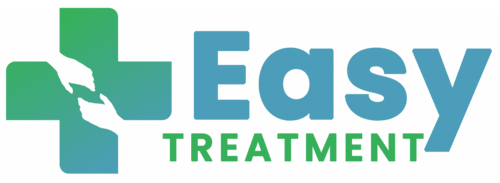Varicose veins on the feet are more than just a cosmetic concern; they can lead to significant discomfort and complications if left untreated. This condition involves swollen, twisted veins that become visible on the skin surface due to weakened vein walls and malfunctioning valves. The feet, bearing the weight of our daily activities, are particularly prone to developing varicose veins.
In this blog, we’ll explore the causes, symptoms, and treatment options for varicose veins on the feet. We’ll also provide tips for prevention and highlight how Easy Treatment can support you on your journey to better vascular health.
What Are Varicose Veins on Feet?
Varicose veins on the feet are a result of improper blood flow. Healthy veins carry blood back to the heart using valves that prevent backflow. When these valves weaken or fail, blood collects in the veins, causing them to stretch and become varicose.
The condition is most noticeable on the feet and legs because these areas endure higher pressure from standing and walking. Varicose veins on feet often appear as bulging, rope-like veins that are dark blue or purple.

Who Is at Risk of Varicose Veins on Feet?
Certain individuals are more prone to developing varicose veins on their feet. Common risk factors include:
- Gender: Women are more likely to experience varicose veins due to hormonal changes during pregnancy, menopause, or while taking hormonal medications.
- Age: Aging naturally weakens vein walls and valves, increasing the likelihood of varicose veins.
- Occupation: Jobs that require prolonged standing or sitting, such as teaching, healthcare, or retail, elevate the risk.
- Genetics: If your family has a history of varicose veins, your chances of developing them are higher.
How Varicose Veins Affect Foot Veins
The foot veins are particularly vulnerable to varicose veins due to the constant pressure of gravity and weight-bearing activities. This can cause:
- Foot Swelling: As blood pools in the veins, fluid leaks into surrounding tissues, leading to swelling.
- Aching and Discomfort: Prolonged standing or walking can exacerbate pain in the feet.
- Skin Changes: Varicose veins may cause skin discoloration or thickening near the affected veins.
Signs You Shouldn’t Ignore
While many people dismiss early signs of varicose veins, timely attention can prevent complications. Symptoms to watch for include:
- Persistent swelling in the feet or ankles.
- A burning sensation or heaviness in the feet.
- Visible, bulging veins that are tender to the touch.
- Night cramps or restless legs.
Ignoring these symptoms can lead to complications like venous ulcers, blood clots, or chronic venous insufficiency.
Complications of Untreated Varicose Veins on Feet
When left untreated, varicose veins on feet can result in:
- Venous Ulcers: Open sores that form near the affected veins, particularly around the ankles.
- Deep Vein Thrombosis (DVT): Blood clots in deeper veins can lead to life-threatening conditions like pulmonary embolism.
- Skin Infections: Swollen veins can cause skin breakdown and increase susceptibility to infections like cellulitis.
Seeking timely treatment can help avoid these severe outcomes.
Effective Treatments for Varicose Veins on Feet
Treatments for varicose veins on feet are tailored to the severity of the condition. Here’s a detailed look at the available options:
1. Home Remedies and Self-Care
- Leg Elevation: Elevating your feet above heart level improves blood flow and reduces swelling.
- Hydration and Diet: Drinking plenty of water and eating fiber-rich foods can prevent constipation, which contributes to vein pressure.
- Exercise: Activities like walking, yoga, or swimming promote blood circulation and reduce vein pressure.
2. Compression Therapy
Compression stockings are a widely recommended solution to improve circulation. These stockings provide graduated pressure to reduce swelling and prevent blood pooling in foot veins.
3. Advanced Medical Treatments
When self-care isn’t enough, modern medical procedures offer effective solutions:
- Sclerotherapy: This involves injecting a solution into varicose veins, causing them to close and eventually fade.
- Laser Treatments: Advanced laser therapy seals off smaller varicose veins.
- Endovenous Ablation: A minimally invasive technique using radiofrequency or laser to heat and close off the affected veins.
- Vein Stripping and Ligation: In severe cases, the damaged vein is surgically removed.
At Easy Treatment, we offer the latest medical procedures to address varicose veins on feet with minimal downtime.

How to Manage Foot Swelling Caused by Varicose Veins
Managing foot swelling involves a combination of home care and professional treatment:
- Elevate your legs whenever possible.
- Wear loose, comfortable shoes to avoid further constriction of blood flow.
- Massage the feet gently to stimulate circulation.
If the swelling persists, consult a specialist to explore treatment options.
Preventing Varicose Veins on Feet
While some risk factors like genetics and aging are unavoidable, lifestyle changes can significantly reduce the likelihood of developing varicose veins:
- Stay Active: Regular physical activity, such as walking or cycling, keeps blood flowing smoothly.
- Wear Comfortable Footwear: High heels can strain your veins. Opt for supportive shoes that promote proper alignment.
- Avoid Long Periods of Standing or Sitting: Take breaks to stretch or walk if your job involves prolonged sitting or standing.
- Monitor Your Weight: Maintaining a healthy weight eases pressure on your foot veins.
Why Easy Treatment Is Your Trusted Partner
At Easy Treatment, we understand the physical and emotional toll of varicose veins. Our team of specialists is dedicated to providing:
- Accurate diagnosis using state-of-the-art equipment.
- Comprehensive treatment plans customized to your needs.
- Post-procedure care to ensure optimal recovery.
We also offer assistance with appointments, hospital admissions, and aftercare guidance, making your healthcare journey seamless. For any questions, visit our Ask Questions page to get started.
Varicose veins on feet may seem like a minor issue at first, but they can significantly impact your quality of life. Recognizing the symptoms early and seeking prompt treatment can prevent complications. From lifestyle adjustments to advanced medical procedures, there are effective ways to manage and treat varicose veins.
Don’t let varicose veins hold you back. At Easy Treatment, we are committed to helping you regain your comfort and confidence. Contact us today to explore personalized treatment options and take the first step toward healthier feet and better vascular health.

